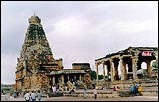
Varna-Ashrama-Dharma in Vedic Period.
In later Vedic period in India several villages and cities were built and developed. Metals like gold, silver, copper, bronze and iron were used in the preparation of ornaments, utensils and weapons.
Property was, as a rule, inherited by sons. Daughters were allowed to hold properties with certain limitation. Adoption was in practice. On the whole the Aryas in the Vedic period were both industrious and prosperous. The harmony between various between various classes and people of different professions were based on the “Dharma of class and stage of life” [Varna-Ashrama-Dharma]. The dharma a general code of conduct is also supplemented by a Dharma appropriate to each class and each stage in the life of the individual. Some political people in India say that Varna system is based on the colour consciousness of the Aryas and their keen desire to protect its purity. This is not correct. There is no evidence to suggest such a division of society based on colour. Varna is an order of chosen professions only.
The Varna system was an order of society consisting all the vedic people. It was a grouping of castes. The society was divided into four groups Brahmanas, Kshatriyas, Vaishyas and Shudras. Birth has nothing to do with the system. Everyman, when he chooses a function, must do it to the best of his capacity and with an eye on social good and it is the Varna-Dharma. Every individual must do his duty and the contribution to the social welfare.
The duties of the Brahmana and other rules of discipline specially devised for them were difficult. The number of brahmanas was and always has been very small. Kshatriyas, were men of action and enjoyed the unique privileges in social organization, study and meditation were compulsory for them, and several kshatriyas distinguished themselves as philosophers. Vaishyas were the largest group engaged in various wealth-producing activities. They could help the rulers and others in their duties. A vaishya was an expert business-man with a specialized knowledge of jewels, metals, cloth, spices, perfumes, trades and crafts. The Shudras were labourers doing hard work like agriculture and other duties like cattle-breeding, industry and commerce.
The duties of Varna were to ensure social harmony and welfare conduct, and not birth, remained the basis of the Varna system.
[Baratha Bhoomi will continue.]












